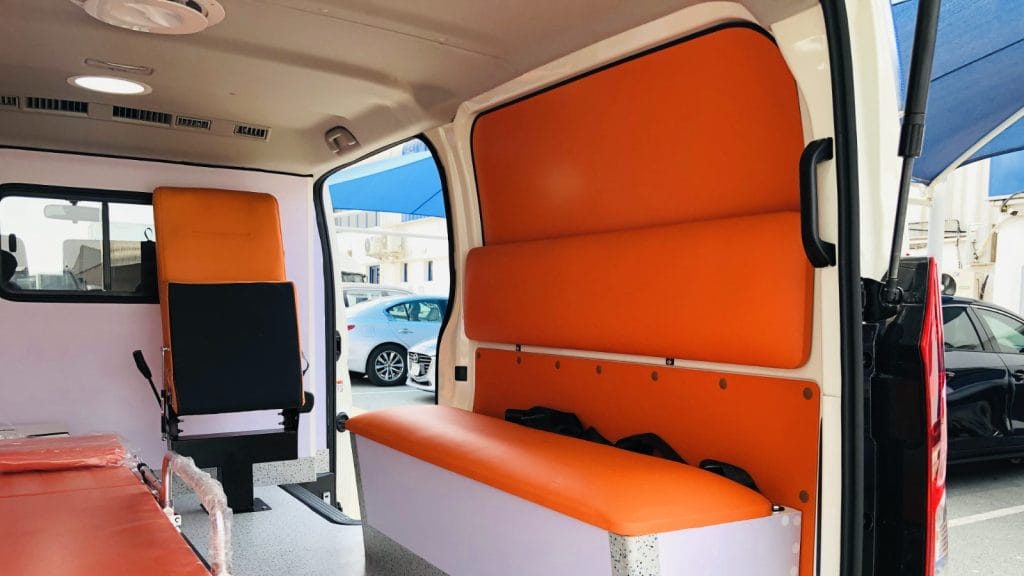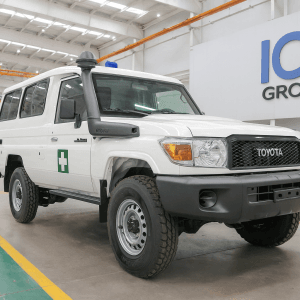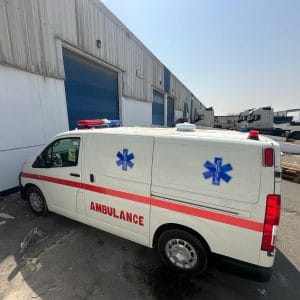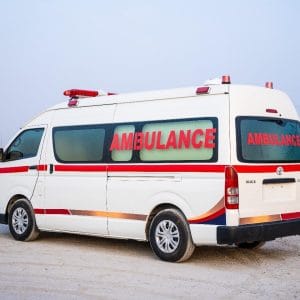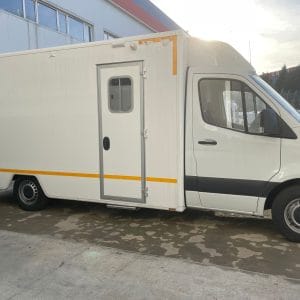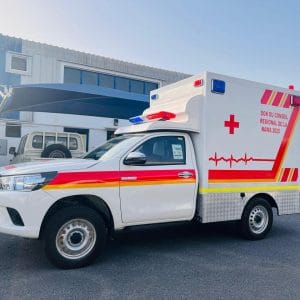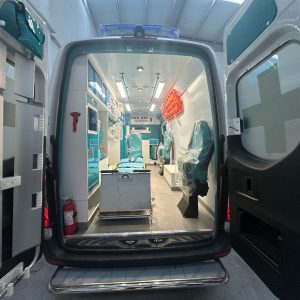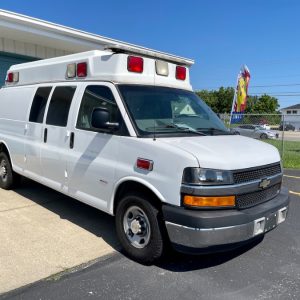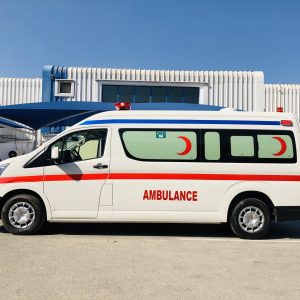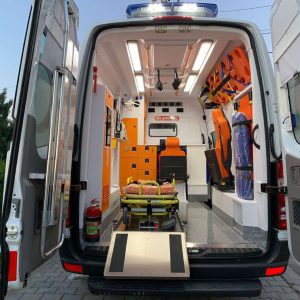Basic Ambulance Equipment List; When you hear the distant wail of a siren growing closer, you know help is on the way. But what exactly does that “help” look like inside the vehicle? An ambulance is far more than just a fast-moving transport; it’s a compact, mobile emergency room, stocked with a sophisticated array of tools designed to stabilize patients and save lives from the moment the crew arrives on scene.
For aspiring EMTs and paramedics, understanding this equipment is fundamental. For the general public, it demystifies the incredible work of emergency medical services (EMS). In this comprehensive guide, we will walk through the essential categories of basic ambulance equipment, explaining what each item is and its critical role in pre-hospital care.
1. Patient Transportation and Movement Equipment
Basic Ambulance Equipment List; Before any advanced care can be given, the crew must safely reach and move the patient. This category includes the fundamental hardware for access and transport.
- Ambulance Stretcher (or Gurney): The cornerstone of patient movement. Modern stretchers are highly engineered, with hydraulic or electric systems to adjust height, trendelenburg (feet above head) for shock, and Fowler’s (sitting up) for breathing difficulties. They are lightweight, robust, and easily lock into the ambulance’s mounting system.
- Stair Chair: For narrow hallways, steep stairs, or cramped spaces where a full-sized stretcher won’t fit. This portable chair allows two EMTs to carry a seated patient safely down flights of stairs.
- Long Spine Board & KED (Kendrick Extraction Device): Crucial for trauma patients with suspected spinal injuries. The long board is used for full-body immobilization during extrication from vehicles or other confined spaces. The KED is a more focused device that immobilizes just the patient’s torso, neck, and head, ideal for car accidents where a patient is found sitting.
- Wheelchair: For patients who are stable and can sit but are unable to walk.
2. Airway and Breathing Management Equipment
The “A-B-C” of emergency care is Airway, Breathing, Circulation. Securing a patient’s airway is always the first priority. This kit is vital for every call, from a severe asthma attack to cardiac arrest.
- Bag-Valve-Mask (BVM): Often called an Ambu-bag, this is the primary tool for manually ventilating a non-breathing patient. It consists of a self-inflating bag, a one-way valve, and a face mask. It can be used with room air or connected to an oxygen source.
- Portable Suction Unit: Patients often vomit or have secretions blocking their airway. A portable suction unit, with its tubing and a variety of tips (Yankauer), is used to clear the mouth and throat quickly and effectively.
- Oxygen Cylinders: The lifeline for patients in respiratory distress. Ambulances carry both large main cylinders and smaller, portable “D” cylinders for use outside the vehicle. Oxygen is considered a drug and is administered based on patient condition.
- Oxygen Delivery Devices:
- Non-Rebreather Mask: The standard for delivering high concentrations of oxygen to patients who are breathing on their own but need support.
- Nasal Cannula: Used for stable patients requiring low to medium oxygen flow.
- Advanced Airway Equipment: While basic EMTs focus on manual methods, paramedics carry advanced tools:
- Laryngoscope and Endotracheal Tubes (ETT): For endotracheal intubation—placing a breathing tube directly into the patient’s trachea to secure the airway definitively.
- Supraglottic Airways (e.g., i-gel, LMA): These are alternative advanced airways that are easier and faster to insert than an ETT in certain situations, forming a seal above the vocal cords.
3. Cardiac Monitoring and Defibrillation
When a patient’s heart is in trouble, seconds count. This category contains the most iconic of all ambulance equipment.
- Automated External Defibrillator (AED): Standard equipment on all ambulances and many public spaces. An AED can analyze a heart rhythm and, if it detects a “shockable” rhythm like Ventricular Fibrillation, deliver a life-saving electric shock. Modern devices provide clear audio and visual instructions, making them usable by laypersons and professionals alike.
- Manual Defibrillator/Monitor: This is the paramedic’s powerhouse. Devices like the Zoll X Series or Philips HeartStart do more than just defibrillate. They are a multi-function monitor that can:
- Display a detailed ECG (electrocardiogram) to diagnose complex heart rhythms.
- Deliver manual, calibrated shocks.
- Provide Transcutaneous Pacing (TCP) to externally pace a heart that is beating too slowly.
- Measure vital signs like SpO2 (Blood Oxygen Saturation) via pulse oximetry, NIBP (Non-Invasive Blood Pressure), and ETCO2 (End-Tidal CO2), which is a critical measure of how well a patient is being ventilated.
4. Basic First Aid and Trauma Supplies
This is the general “toolbox” for handling wounds, injuries, and immobilization.
- Bandages and Dressings: A wide assortment is carried, from small adhesive bandages to large, sterile trauma dressings for controlling major bleeding. Roller gauze, combine pads, and abdominal pads are all staples.
- Hemostatic Agents: Special dressings impregnated with agents that promote rapid blood clotting, used for severe, life-threatening hemorrhage that standard dressings can’t control.
- Tourniquets: Once a tool of last resort, tourniquets like the CAT (Combat Application Tourniquet) are now standard for immediately controlling massive bleeding from an extremity. Their application is a key part of “Stop the Bleed” initiatives.
- Burn Kits: Containing sterile, water-based burn gels and special non-adherent dressings to cover and cool burn injuries.
- Cervical Collars (C-Collars): Rigid collars used to immobilize the neck of a trauma patient to prevent further damage to the spinal cord.
5. Diagnostic Equipment
You can’t treat what you don’t know. Diagnostic tools help the crew assess the patient’s condition and monitor for changes.
- Stethoscope: The quintessential medical tool. Used for listening to heart sounds, lung sounds, and taking blood pressure.
- Sphygmomanometer: A blood pressure cuff. Ambulances carry manual aneroid cuffs and the defibrillator/monitor often takes automatic readings.
- Pulse Oximeter: While often integrated into the main monitor, handheld pulse ox devices are common. They clip onto a finger, toe, or earlobe to instantly measure the oxygen saturation in the patient’s blood.
- Thermometer: For checking body temperature, which can be critical in cases of infection, heat stroke, or hypothermia.
- Penlight: A small, focused flashlight used for checking pupil reaction and examining wounds in dark environments.
6. Medications and Intravenous (IV) Therapy
This is primarily the domain of paramedics, who are trained to administer a range of emergency drugs.
- Medication Kit: A locked, secure kit containing vials, ampules, and pre-filled syringes of essential drugs. This typically includes:
- Epinephrine: For severe allergic reactions (anaphylaxis) and cardiac arrest.
- Aspirin: Administered for suspected heart attacks.
- Nitroglycerin: For chest pain related to cardiac issues.
- Albuterol: For asthma and breathing difficulties.
- Dextrose: For low blood sugar (hypoglycemia).
- Naloxone: To reverse the effects of an opioid overdose.
- IV Access Supplies: To deliver fluids and medications directly into the bloodstream.
- IV Catheters: Various gauge needles placed in a vein.
- IV Fluids: Saline (0.9% NaCl) and Lactated Ringer’s are the most common, used to maintain blood pressure and hydration.
- IV Tubing, Drip Sets, and Dressings.
7. Personal Protective Equipment (PPE) and Safety Gear
The safety of the EMS crew is paramount. They cannot help others if they become injured or contaminated themselves.
- Gloves: Nitrile gloves are worn on every single call to protect against bodily fluids and contaminants.
- Face Masks and Eye Protection: Surgical masks, N95 respirators for airborne diseases, and goggles or face shields are standard, especially post-COVID-19.
- Disposable Gowns: For high-fluid situations or patients with known infectious diseases.
- Reflective Vests: To ensure crew visibility and safety when working on roadways, especially at night.
8. Communication and Documentation
The link between the field and the hospital is critical for seamless patient care.
- Two-Way Radio: The primary means of communication with dispatch and the receiving hospital. Allows for situation updates and, crucially, “medical control” where a physician can order specific medications or procedures.
- Toughbook/Laptop: Used for electronic Patient Care Report (ePCR) documentation, accessing protocols, and GPS navigation.
- Cell Phones: A vital backup and supplementary communication tool.
Specialized and Optional Equipment
Depending on the service level (e.g., Critical Care Transport) and location (e.g., rural vs. urban), ambulances may carry more advanced gear:
- Ventilator: For long-term, automated breathing support during transport for sedated or critically ill patients.
- CPAP/BiPAP: For patients in severe respiratory distress from conditions like pulmonary edema or COPD, to help them breathe without needing intubation.
- Blood Glucose Monitor: To check a patient’s blood sugar levels.
- Obstetrical (OB) Kit: For the rare but time-sensitive event of delivering a baby in the field.
Conclusion: More Than Just Tools
The equipment inside an ambulance is a testament to the evolution of emergency medicine. Each item, from a simple roller bandage to a complex monitor, has a specific and vital purpose. It represents the commitment to providing hospital-level care at the scene of a crisis and during the critical journey to the emergency department.
This “lifesaving arsenal” is only as effective as the highly-trained professionals who wield it. The real magic lies in the hands of the EMTs and paramedics who, with skill, compassion, and quick thinking, use these tools to make the difference between life and death.
Disclaimer: This blog post is for informational purposes only and is not a substitute for professional medical training or advice. The specific equipment carried on ambulances can vary by region, service level, and protocol.


